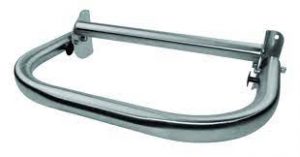In what contexts are flip-up mechanisms commonly utilized?
flip-up
Flip-up mechanisms are versatile features utilized in various contexts across numerous industries to enhance functionality, accessibility, and user experience. These mechanisms typically involve hinges or pivot points that enable a section of a product to be flipped up or lifted, revealing hidden compartments, components, or features. Understanding the contexts in which flip-up mechanisms are commonly utilized sheds light on their diverse applications and benefits.
In the realm of furniture design, Flip up mechanisms are frequently employed to maximize storage space and streamline organization. Ottoman beds with flip-up lids provide convenient access to hidden storage compartments, allowing users to store bedding, pillows, or other items out of sight. Similarly, coffee tables with flip-up tops offer additional storage for books, magazines, or remote controls, contributing to a clutter-free living space.
Flip-up mechanisms are integral to automotive design, serving various functions ranging from aerodynamics to convenience. Classic cars and some modern sports cars feature flip-up headlights that can be raised for illumination and retracted for a sleek appearance. Additionally, flip-up center consoles or armrests in vehicles provide extra storage compartments or versatile surfaces for passengers, enhancing comfort during travel.

In what contexts are flip-up mechanisms commonly utilized?
The incorporation of flip-up mechanisms in electronic devices is aimed at optimizing usability and adaptability. Laptops often feature flip-up screens or keyboards, allowing users to switch between laptop and tablet modes effortlessly. Similarly, desktop computers may utilize flip-up panels to access internal components like hard drives or memory modules, simplifying maintenance and upgrades.
Flip-up mechanisms are commonly found in kitchen cabinets and appliances to improve accessibility and organization. Cabinets with flip-up doors provide easy access to upper shelves, eliminating the need for reaching or stooping. Additionally, some kitchen appliances, such as blenders or stand mixers, incorporate flip-up lids to facilitate ingredient addition and cleaning.
In medical settings, flip-up mechanisms are utilized in various equipment to facilitate patient care and examination. Examination tables may feature flip-up stirrups or footrests to accommodate different patient positions during procedures. Similarly, medical carts or cabinets may incorporate flip-up trays or shelves for storing supplies and equipment securely while optimizing space.
Flip-up mechanisms play a crucial role in maximizing space and comfort in recreational vehicles (RVs) and camper vans. Fold-up beds or seating arrangements enable efficient use of limited space, allowing users to transform living areas into sleeping quarters as needed. Additionally, flip-up tables or countertops provide versatile surfaces for dining or workspace, enhancing the overall functionality of the vehicle interior.
In office environments, flip-up mechanisms are utilized in desks, tables, and storage solutions to adapt to changing needs and spatial constraints. Desks with flip-up panels or extensions offer additional workspace when required, optimizing productivity in compact office settings. Similarly, filing cabinets may feature flip-up drawers or compartments to organize documents and office supplies efficiently.
flip-up mechanisms are ubiquitous features employed in diverse contexts, including furniture design, automotive engineering, electronic devices, kitchen appliances, medical equipment, recreational vehicles, and office furniture. By enabling convenient access to hidden compartments or components, these mechanisms enhance usability, organization, and comfort across various industries and applications.